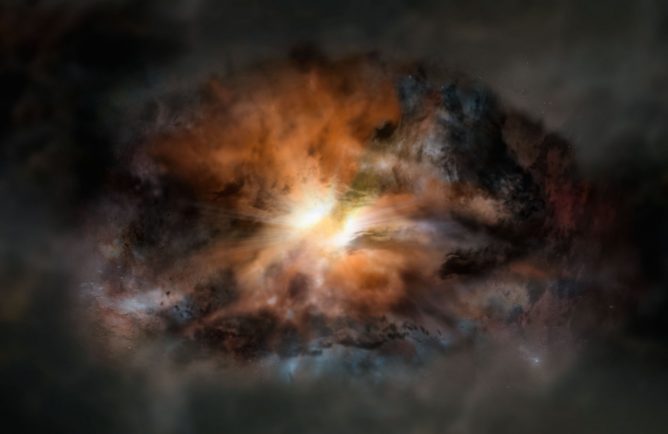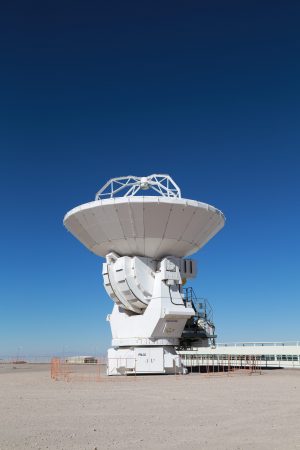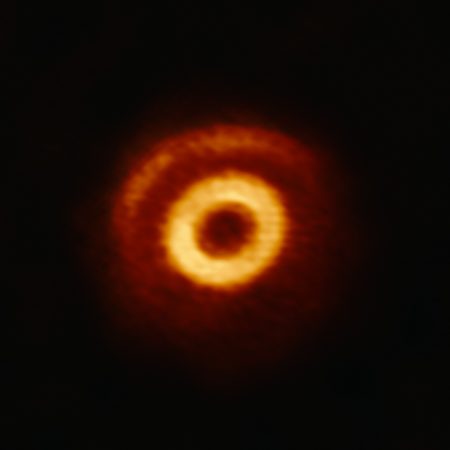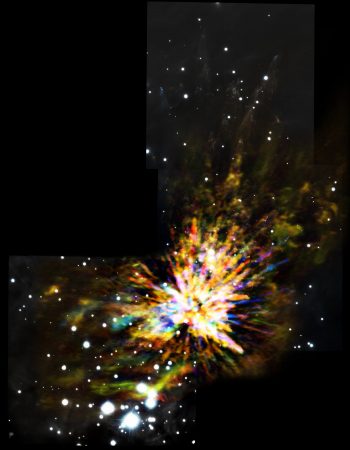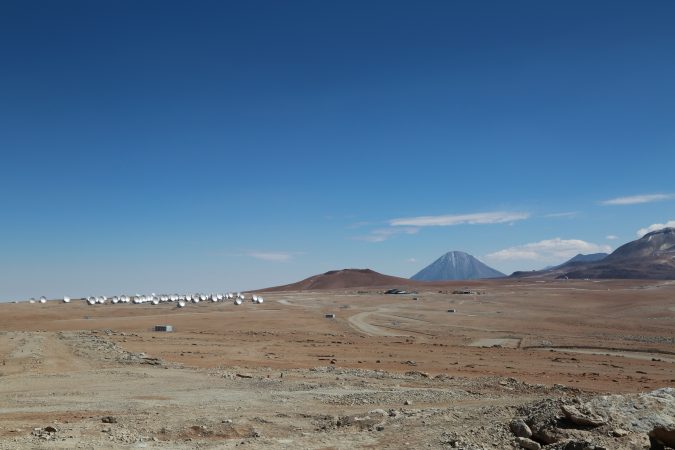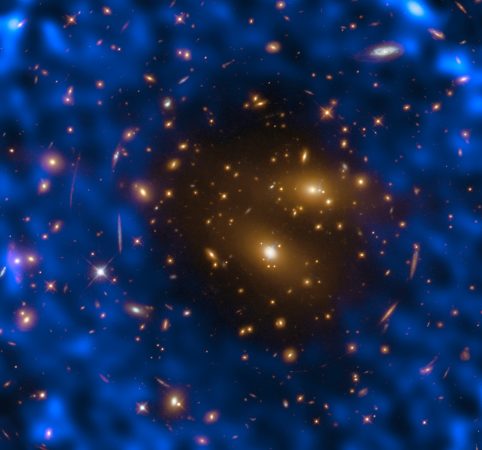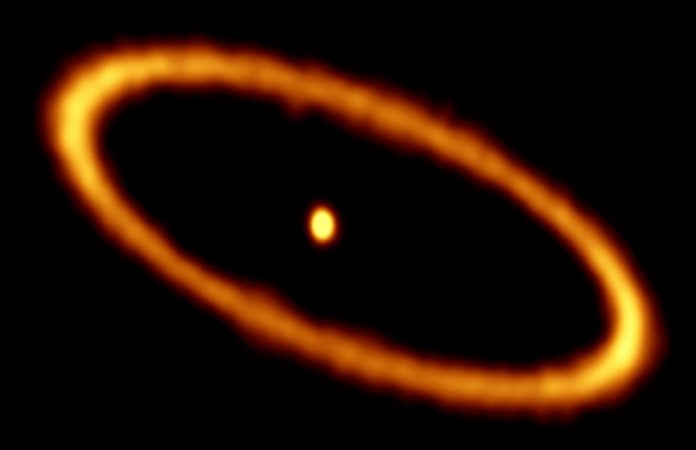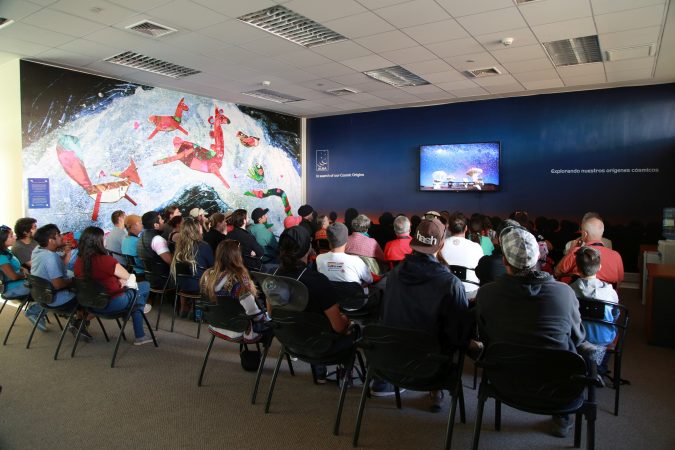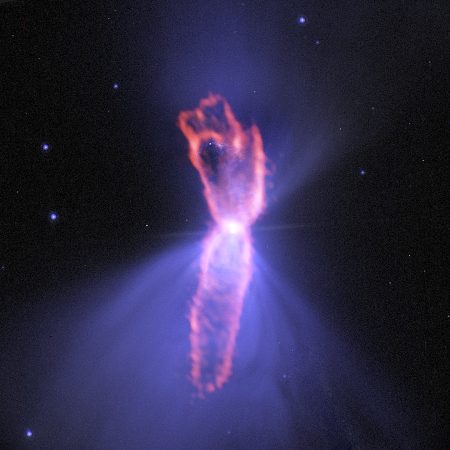2018.02.20
No relation between a supermassive black hole and its host galaxy!? - The co-evolution mystery deepened by a new ALMA observation
According to a popular scenario explaining the formation and evolution of galaxies and supermassive black holes, radiation from galactic centers – where supermassive black holes locate – can significantly influence the molecular gas (such as CO) and the star formation activities of the galaxies. With an ALMA result showing that the ionized gas outflow driven by the supermassive black hole does not necessarily affect its host galaxy, “it has made the co-evolution of galaxies and supermassive black holes more puzzling,” Yoshiki explains, “the next step is looking into more data of this kind of galaxies. That is crucial for understanding the full picture of the formation and evolution of galaxies and supermassive black holes”.
Answering the question “How did galaxies form and evolve during the 13.8-billion-year history of the universe?” has been one top issue in modern astronomy. Studies already revealed that almost all massive galaxies harbor a supermassive black hole at their centers. In recent findings, studies further revealed that the masses of black holes are tightly correlated with those of their host galaxies. This correlation suggests that supermassive black holes and their host galaxies have evolved together and closely interacted each other as they grow, also known as the co-evolution of galaxies and supermassive black holes.
The gas outflow driven by a supermassive black hole at the galactic center recently has become the focus of attention as it possibly is playing a key role in the co-evolution of galaxies and black holes. A widely accepted idea has described this phenomenon as: the strong radiation from the galactic center in which the supermassive black hole locates ionizes (*1) the surrounding gas and affects even molecular gas that is the ingredient of star formation; the strong radiation activates (*2) or suppresses (*3) the star formation of galaxies. However, “we astronomers do not understand the real relation between the activity of supermassive black holes and star formation in galaxies”, says Tohru Nagao, Professor at Ehime University. “Therefore, many astronomers including us are eager to observe the real scene of the interaction between the nuclear outflow and the star-forming activities, for revealing the mystery of the co-evolution.”
The team has focused on a particular type of objects called Dust-Obscured Galaxy (DOG) that has a prominent feature: despite being very faint in the visible light, it is very bright in the infrared. (Figure 1).
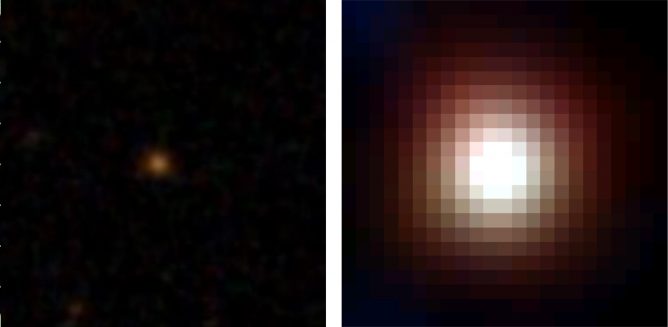
Figure
1: Image of a DOG, WISE1029. The left and right panels show optical
image from the Sloan Digital Sky Survey (SDSS), and mid-infrared image
from WISE, respectively. The image size is 30 square arcsecond (1
arcsecond is 1/3600 degree). It is clear that DOGs are faint in the
optical, but are extremely bright in the infrared. The SDSS spectrum
indicates that strong ionized gas is outflowing toward us from WISE1029.
Credit: Sloan Digital Sky Survey/NASA/JPL-Caltech
Astronomers are believing that DOGs harbor actively growing supermassive black holes in their nuclei (*4). In particular, one DOG (WISE1029+0501, hereafter WISE1029) is outflowing gas ionized by the strong radiation from its supermassive black hole. WISE1029 is known as an extreme case in terms of ionized gas outflow, and this particular factor has motivated the researchers to see what happens to its molecular gas.
By making use of ALMA’s outstanding sensitivity which is excellent in investigating properties of molecular gas and star forming activities in galaxies, the team conducted their research by observing the CO and the cold dust of galaxy WISE1029 (Figure 2). After detailed analysis, surprisingly they found, there is no sign of significant molecular gas outflow. Furthermore, star forming activity is neither activated nor suppressed. This indicates that a strong ionized gas outflow launched from the supermassive black hole in WISE1029 neither significantly affect the surrounding molecular gas nor the star formation.
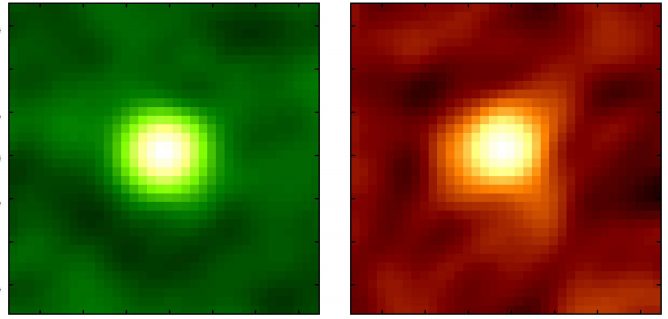
Figure
2: Emission from carbon monoxide (left) and cold dust (right) in
WISE1029 observed by ALMA. The image size is 3 square arcsecond.
Credit: ALMA (ESO/NAOJ/NRAO), Toba et al.

Figure
3: A schematic view of the fact that an ionized gas outflow (green)
driven by the central supermassive black hole does not affect the star
formation of its host galaxy. This situation may occur if the ionized
gas is outflowing perpendicularly to the molecular gas.
Credit: ALMA (ESO/NAOJ/NRAO)
There have been many reports saying that the ionized gas outflow driven by the accretion power of a supermassive black hole has a great impact on surrounding molecular gas (e.g., *2,3). However, it is a very rare case that there is no tight interaction between ionized and molecular gas as the researchers are reporting this time. Yoshiki and the team’s result suggests that the radiation from a supermassive black hole does not always affect the molecular gas and star formation of its host galaxy.
While their result is making the co-evolution of galaxies and supermassive black holes more puzzling, Yoshiki and his team are exciting about revealing the full picture of the scenario. He says, “understanding such co-evolution is crucial for astronomy. By collecting statistical data of this kind of galaxies and continuing in more follow-up observations using ALMA, we hope to reveal the truth.”
Paper and research team
These observation results were published as Toba et al. “No sign of
strong molecular gas outflow in an infrared-bright dust-obscured galaxy
with strong ionized-gas outflow” in the Astrophysical Journal in
December 2017.
This research was conducted by:
Yoshiki Toba (Academia Sinica), Shinya Komugi (Kogakuin University),
Tohru Nagao (Ehime University), Takuji Yamashita (Ehime University),
Wei-Hao Wang (Academia Sinica), Masatoshi Imanishi (National
Astronomical Observatory of Japan), Ai-Lei Sun (Academia Sinica, now
Johns Hopkins University)
This research was supported by the Japan Society for the Promotion of Science through Grants-in-Aid for Scientific Research (No. 15H02074, 16H01101, 16H03958) and by the Ministry of Science and Technology, Taiwan (MOST 105-2112-M-001-029-MY3).
Notes:
※1 It is a phenomenon where ultraviolet and X-ray radiation make a neutral gas plasma state.
※2 See the ALMA news “Black-Hole-Powered Jets Forge Fuel for Star Formation” on February 15, 2017
※3 See the ALMA news “Chaotic Turbulence Roiling ‘Most Luminous Galaxy’ in the Universe” on February 18, 2016.
※4 See the press release from Subaru Telescope “Discovering Dust-Obscured Active Galaxies as They Grow” on August 26, 2015.


